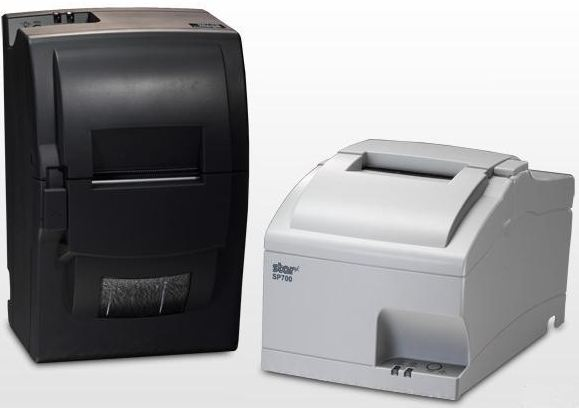Thermal or impact? “He’s holding a thermal…printer!” While these words might not sound as urgent as C-3PO’s warning about thermal detonators in the Return of the Jedi, there is certainly something to be said about the supremacy of a thermal printer. Thermal receipt printers are faster, quieter and you don’t have to worry about ink cartridges or ribbons. Keep in mind that when it comes to receipt printers, thermal refers to direct thermal. The term thermal transfer isn’t used for receipt printing. Thermal receipt printers are the most common type in use today. Most of the time, this is a no-brainer. Buy thermal.
Why are impact (AKA dot matrix) receipt printers still around, you may ask? The number one use is in commercial kitchens. You see, thermal paper works by turning characters black under precise heat placement from a thermal print head. So if you were to hang a thermal order ticket over a 500° flat top grill, it would turn completely black. Not so good. Impact printers are definitely the better choice here. Kitchen printers should also usually be equipped with an Ethernet interface (orders are generally printed from the front of house) and an auto-cutter, as I will discuss below.
The other use for impact printers is with multi-part or multiple-use forms. Multi-part forms used to be ubiquitous for credit card receipts. You used to get a two-ply pressure sensitive receipt (white/canary anyone?) where you would sign the receipt and keep a signed copy. The fact that this practice is all but extinct in favor of printing two receipts on thermal paper should tell you all you need to know about thermal versus impact printing. Still, there are specialty printers such as journal, slip and validation printers (I’m going to skip these for the sake of brevity) that still require impact printing.
Tear bar or auto-cutter? A tear bar is a serrated edge that allows you to tear the receipt from the printer. An auto-cutter slices the receipt almost all the way across the width, leaving a small bit uncut. That bit is left uncut for printing multiple receipts or tickets unattended, so that they’re still attached, but just barely. Think back to that kitchen printer and what happens when four tickets get sent back at once. If there’s no cutter, you have four orders on one continuous print. If it cut all the way through, the tickets would be on the floor.
Tear bar is fine if you’re going to hand a customer a receipt that does not require a signature after every transaction. In the case of multiple print orders or duplicate receipts for credit card transactions, auto-cutter is the way to go. Some models provide this feature by default, but for most it’s an option.
Accessories. Receipt printers may or may not include a power supply or interface cable. 
All of this leaves you with a lot to consider when making your receipt or other POS printer purchase, but hopefully I have taught you well. If you have any doubts or questions, please contact us before making your purchase. We want you to have the printer with the features you want and the accessories you need to get up and running on delivery. May the force be with you.
